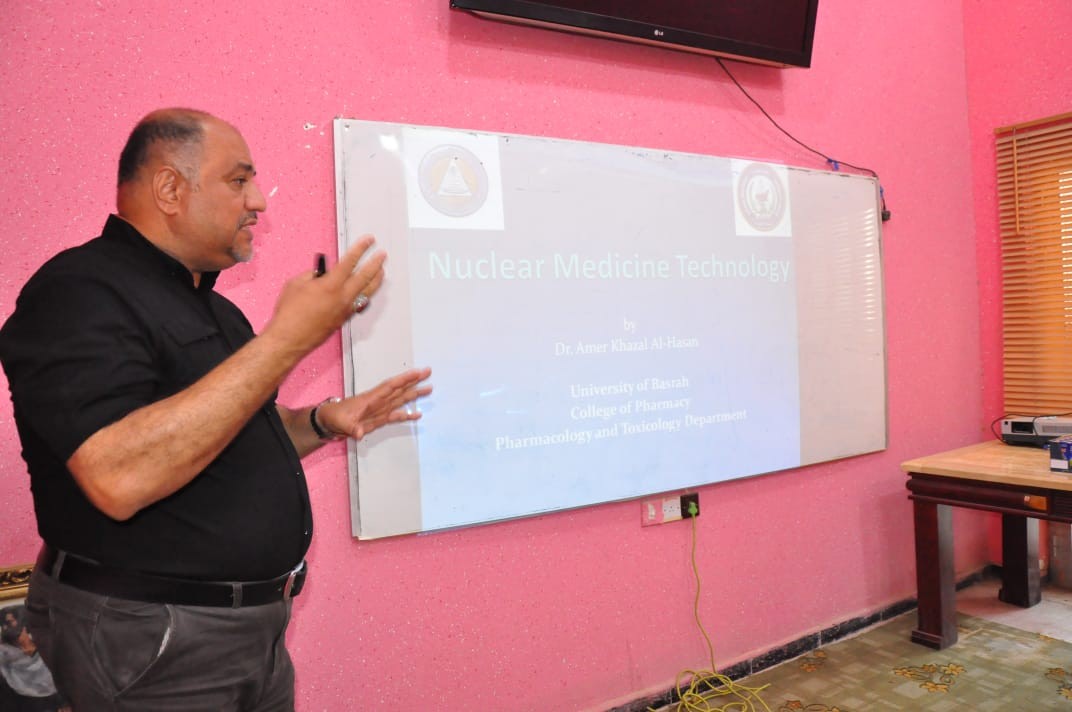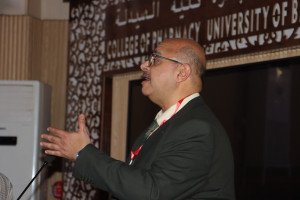
The Department of Medicines and Toxicology at the Faculty of Pharmacy held a panel discussion entitled "Nuclear Medicine Technology" by Dr. Amer Khazal al-Hassan, where the lecture included the introduction of modern nuclear medicine technology, which revolves around the use of Radioactive nuclear with different pharmacological compounds for the purpose of imaging of living organs instead of imaging Anatomical, in addition to radionuclides therapy, is an example of thyroid diseases and various tumors. Explained The mechanism of laboratory preparation and various radionuclides and the reconstruction of half of it for bone, brain and kidney tests and liver, lungs and heart. Types of tests include static, moving, CT and integrated tests 3D positron emission and emission. The types of cameras used have been reviewed In the technology of nuclear medicine and its main components and modus operandi in addition to the tests of quality control has been Review the images produced by this technique for examinations of bones, thyroid, heart and general organs of the body And ways to diagnose the disease. Positron emission ct scans require high-tech techniques such as the presence of A sophisticated chemical laboratory that provides a helical anaesthetist for the preparation of short-lived radionuclides. Radioactive fluorine 18, which can be used with a sugar derivative for the purpose of clearly photographing the cancerous tumor areas. All over the body. The heart can also be crated and coronary vascular performance in 3D and high-definition images To show areas of congestive insufficiency and infarction in both cases of rest and fatigue. More than one nueda can also be used Radiant in the same test for the purpose of showing more than one level of image using modern software for cameras Gamma ray and 3D technology








